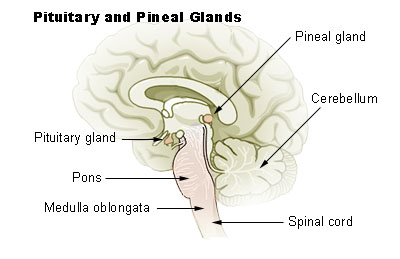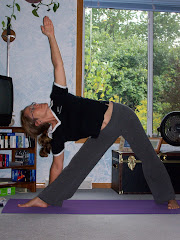One of the joys of Hatha Yoga is to find great health in the body, which not only feels great, but also allow one to experience their more subtle energetic and spiritual bodies.
A severe migraine attack leaves little room for much else. I had a friend that came to visit and ended up having to spend over 24 hours locked away in a dark room until her pain passed.
Understanding the Migraine Headache
The Mayo Clinic says that "some researchers think migraines may be caused by functional changes in the trigeminal nerve system, a major pain pathway in your nervous system, and by imbalances in brain chemicals, including serotonin, which plays a regulatory role for pain messages going through this pathway." When the serotonin levels dip, the trigeminal nerve releases neuropeptides. These neuropeptides cause the blood vessels in the meninges (outer layer of the brain) to swell. This brings on a headache or migraine.
The trigeminal nerve is the largest of the cranial nerves. It originates at the brain stem and branches into three nerves. One of these is the mandibular nerve, which branches even further. The interesting part is that it innervates various areas such as the tongue, inner cheek, teeth, gums, lower lip, and chin. With this knowledge, it seems that dental issues, including TMJ, could aggravate migraines. So, alignment of the jaw and release of the tongue will be used in therapy.
Serotonin is sometimes called the "happiness drug", because it impacts your mood. Low levels can be felt as sadness or depression. Stress can lower the amount of serotonin in your body.

Your body produces this chemical in the pineal gland, which is known as the third eye by Yogis. This is why meditation on the third eye, or mid-brain, is useful in therapy.
Therapy for Migraine Headaches
Mountain (Tadasana) - Stand with parallel feet separated and directly below your hip joint. Lean slightly forward, back, and then side to side. Find the spot where the weight is balanced and hovering just in front of the heels. The sternum lifts up gently as the shoulder blades melt down the back. Drop the chin down and then lift it up. Do this a few times and then stay at the spot where the weight of your head feels the most held by the body. That is, align when the front and back neck muscles are the most balanced. Usually this brings the chin slightly down from parallel with the ground. Maintain the angle of the head as you slide it forward and then back. Again, find the center point. For most people, this will align the ears with the shoulders. Keep that, as you glide your head to the right then left. Find the center. So, now you have reached balance up/down, front/back, and left/right. The teeth are parted and the tongue rests at the bottom of the mouth. Soften your gaze and imagine a cool wash cloth being placed on the skin of your face--all the way to the ears. Relax as the breath slows and deepens. Stay for 6-9 breaths.
Downward Facing Dog (Adho Mukha Svanasana) - Place the head on a block to make it more restorative, and stay in the pose for 1-3 minutes.
Shoulderstand (Sarvangasana) - Find a 1:1 ratio of inhales and exhales. Hold at least 6 breaths. If you're comfortable, you can take plow or remain in shoulderstand for up to 21 breaths. (Note: Only do this pose after the body has been warmed up.)
Legs on Wall Pose (Viparita Karani) - Use this mainly as a preventative, to stimulate the pineal gland. If the migraine is already in full swing, this pose brings even more blood into the head, which can increase pain. Bring focus to softening all facial features, and allow the tongue to slip down and back in the mouth. Teeth remain gently parted. Remain in the pose for 8-20 minutes.
Pranayama to reduce stress - Take a comfortable seat and close your eyes. Notice the breath without judgement. Count silently and become aware of the length of your inhales and exhales. Lengthen the shorter breath until both inhale and exhale are of the same length. Only do this as long as there is NO strain at all. Remain at the 1:1 breath for 10 breaths. Gradually, lengthen the exhales until they are twice as long as the inhales. This is a 1:2 breath. Again, remain for 10 breaths. This is a great way to prepare for meditation.
Meditation on the 3d eye - Sit in a comfortable position and breath normally. As you close your eyes, notice the 2 lines of breath coming into the left and right nostrils. Keep the lines separate for a minute or two. Then visualize the lines meeting at the mid-brain--a few inches inside from the point between your eyebrows. Each inhale see the lines of breath joining at the 3d eye (mid-brain). Each exhale see them move apart a few inches beyond the nostrils. Continue in this manner for a few minutes. Eventually, keep all focus at the mid-brain. Imagine a spaciousness growing in this area -- like a radiating light. Stay here for as long as you are able (working up to 10-20 minutes).
Love Much,
Kris
http://www.totalhealthyoga.com/
http://www.learnyogaonline.blogspot.com/
Today is the first day of the rest of your life!
*******************************
I AM NOT A MEDICAL DOCTOR. THESE SUGGESTIONS ARE NOT TO REPLACE MEDICAL CARE.



No comments:
Post a Comment